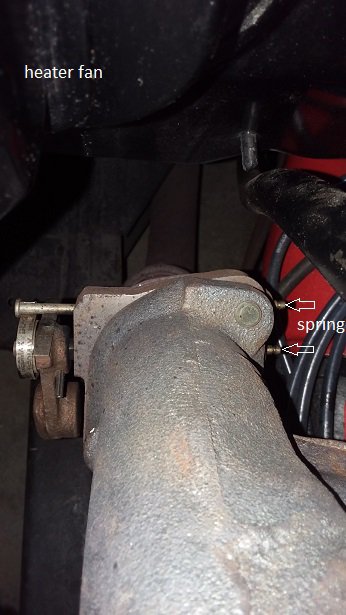- Last seen
- Joined
- Nov 6, 2017
- Thunderbird Year
- 1957
I was wiping down the firewall and noticed a spring hanging from an exhaust part. The part bolted to the end of the passenger side exhaust manifold as it extends down and away from the block.
It looks like the spring is supposed to be connected to the 2 rods shown in the picture. I removed it so it wouldn't get lost. Once I know what its purpose is, I'll connect the spring.
Any ideas?
Thanks
It looks like the spring is supposed to be connected to the 2 rods shown in the picture. I removed it so it wouldn't get lost. Once I know what its purpose is, I'll connect the spring.
Any ideas?
Thanks



